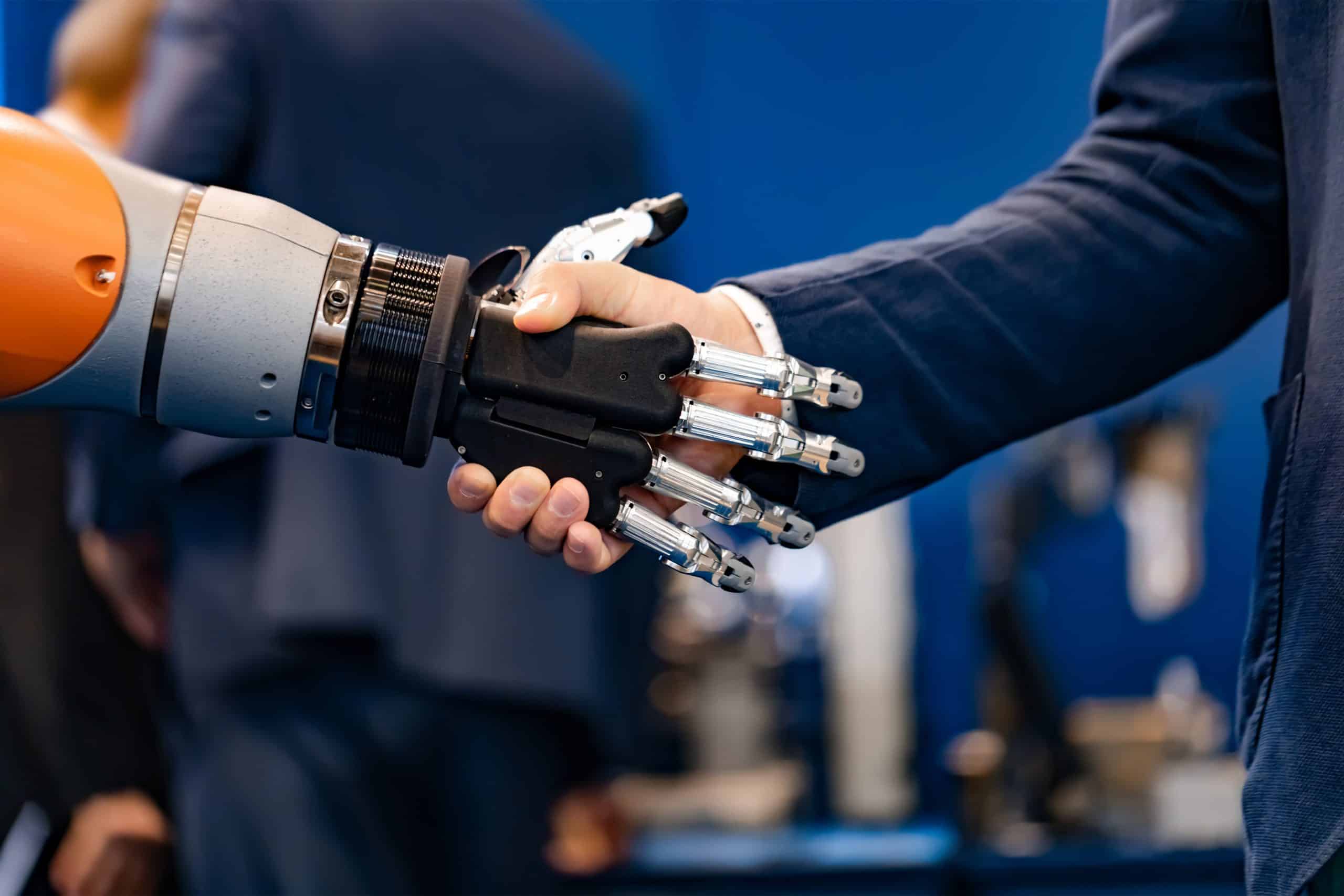A New Kind of Innovation Pressure
“If your best idea took half the time and a quarter of the budget to reach the market, what would that do to your P&L – and your career?”
Enterprise innovation leaders hesitate when I ask that question, and the pause is revealing. Quarterly targets tighten, supply chains wobble, and the cost of capital keeps climbing. Yet many corporate innovation engines still operate like analog metronomes in a streaming world: lengthy research cycles, over-engineered pilots that devour budgets, and committees that vacuum the momentum out of bold ideas.
Artificial intelligence rewrites this equation. I’m not talking about sci-fi dreams of sentient machines; I mean practical, verifiable productivity gains today – results we’ve witnessed firsthand – proof that AI can convert ambitious ideas into measurable outcomes faster than most teams expect.
What follows is a playbook for AI-augmented innovation: how it dismantles age-old frictions, where it can fail spectacularly, and why Beta-i believes the winning combination is human orchestration plus machine acceleration.
Our thesis is blunt:
Enterprises that marry collaborative innovation with AI augmentation will out-learn and out-execute their peers 10 to 1 compared to yesterday’s cost and time.
Rewiring the Innovation Machine
1. Why Traditional Corporate Innovation Stalls
Step into any global R&D center and three frictions appear almost immediately.
First: Signal fog. By the time an insights team finishes its desk research, stakeholder interviews, and consensus slides, the market has already morphed. A 2022 Forrester study found that 58% of product launches in large enterprises use data at least six months old at the moment of go-to-market.
Second: Pilot bloat. To secure cross-functional blessing, teams over-engineer proof-of-concepts until every risk is bubble-wrapped. Ironically, each extra layer of polish inflates budgets and makes leaders more reluctant to kill a project once new evidence contradicts the business case.
Third: Cultural drag. When early experiments die in steering committees, employees internalize the message. They either stop proposing ideas or sandbag their projections to survive governance hurdles. Innovation becomes theater, not transformation.
After fifteen years in the trenches, I’ve learned a hard truth: innovation is 74% mindset and 26% tech/product/solution. Solve the human friction, and the tech delivers miracles; ignore it, and even the best algorithm collects dust.
2. How AI Removes Friction – and Adds New Risk
Think of AI as a turbocharger bolted onto an aging engine. Done well, you enjoy three surges:
Insight acceleration. Synthetic user panels – tools like Synthesis, Synthetic Users or Humanloop – simulate thousands of persona interviews in a single afternoon. A 2024 Forrester Pulse report shows these virtual cohorts cut qualitative research time by 43% on average while maintaining 90% concordance with real-world findings.
Creativity magnification. Turn a brainstorm from a 50-idea affair to a 1.000 concept bonanza. Generative engines turn tight prompts into hundreds of concept sketches, nudging teams beyond the gravitational pull of “last year plus 5%.” Mercedes-Benz, for example, used generative design to lighten an EV partition panel by 30%, shaving weight without compromising crash standards.
Validation autopilot. Agent workflows schedule micro-tests, parse telemetry, and surface go/no-go decisions overnight. Teams that embed agent workflows now run more A/B tests in a week than they once managed in a quarter.
But floor the accelerator without checking the gauges, and the turbo overheats. We’ve watched proof-of-concepts implode because models hallucinated, training data carried hidden bias, or sponsors believed a single prompt would replace disciplined experimentation. AI’s value is proportional to the caliber of the maestro conducting the orchestra.
3. The Innovation Orchestra Metaphor
Think of corporate innovation as a symphony. Strategy writes the sheet music. Cross-functional teams provide strings, brass, percussion. The Innovation Manager lifts the baton. AI isn’t a new musician; it’s the digital baton itself – amplifying tempo, synchronizing cues, suggesting unexpected harmonies – but powerless without trained players and a conductor’s judgment.
4. Building Your AI Innovation Stack: A Layer-by-Layer Guide
A resilient AI stack consists of four interlocking layers:
- Data foundations. Most AI initiatives don’t require training models from scratch. Instead, they rely on providing the proper context through methods like Retrieval-Augmented Generation (RAG) or Model Context Protocol (MCP). That makes data quality critical. You need clear PII tagging, data lineage tracking, regular refresh cycles, and bias audits to ensure reliable outputs and responsible use.
- Tool layer. Deploy specialist modules: synthetic-panel generators for discovery, GPT co-creators for ideation, and platforms for validation.
- Integration fabric. Most workflows are still manually stitched together. Low-code pipelines help bridge that gap. In one case, persona insights flowed into a validation agent and back to ideation overnight. The next wave will unify tools and data under governance for true orchestration.
- Governance overlay. Version control, ethical guardrails, and audit trails. When a Big Four auditor recently demanded provenance for 178 AI-generated decisions, the client produced the log within four hours – because governance wasn’t retrofitted, it was built in from day one.
Provocative question: Could your organization match that four-hour SLA today?
5. Human Expertise Still Wins the Moments That Matter
ChatGPT can draft 30 slides before your espresso cools — but three human skills still shape the edge:
- Strategic prompting. The best outputs come from well-framed inputs. It’s not just asking; it’s knowing how to ask. Think of it as AI whispering.
- Narrative craft. Data doesn’t sell itself. Meaning comes from the stories we build around it — and the humans who tell them.
- Ethical judgment. AI can optimize anything. But only humans decide what’s worth optimizing. Our mantra: “AI proposes, humans dispose.”
Full automation may be possible, but what matters is who sets the intent and where we draw the line.
6. Future of Work Implications: A Day in 2027
Picture an innovation stand-up at a €10B industrial manufacturer, circa 2027:
Lina, a former R&D chemist, now curates multi-source signal feeds – competitive patents, academic preprints, and synthetic customer chatter – into a single hypothesis board. Overnight, her autonomous validation agent launched five micro-tests in three geographies, ingesting usage telemetry and ESG impact data. Jonas, a former PowerPoint specialist, reviews the agent’s confidence intervals, adjusts priors, and green-lights the next test batch – all before 10 a.m.
The old “single-discipline guru” role has morphed into an orchestrator of diverse insights. Risk managers are now portfolio modelers, stress-testing downside across hundreds of simulated futures. A 2024 McKinsey survey already shows that companies adopting these hybrid roles capture 20% higher EBIT from new products than peers.
Savvy HR Leaders act early: they bundle AI fluency into upskilling programs and create internal marketplaces where talent bids for stretch assignments involving autonomous agents. Retraining beats replacing; fear evaporates when employees glimpse an escalator, not a trapdoor.
Conclusion:
Translating Insight into Immediate Action
Three Actionable Takeaways
- Start small, start surgical. Automate a single bottleneck – user interviews or idea clustering – before rewriting your whole playbook.
- Assign a human custodian to every AI tool. Accountability keeps hallucinations out of board packs.
- Institutionalize rapid retrospectives. After each sprint, identify the fastest insight, the most stubborn bias, and iterate inputs accordingly.
Leaving these here for your reflection:
- If AI halved your validation time, which stalled idea would you resurrect tomorrow?
- Which sacred cow in your culture could an AI-backed success finally slaughter?
- When agents make design choices autonomously, how will you certify their ethics to regulators and customers?
And now what? These are some immediate steps you could take to act on your AI innovation strategy:
- Run a focused two-week discovery sprint – internally or with a trusted external partner – to surface high-leverage AI use cases.
- Conduct a data-readiness audit – PII tags, lineage, bias probes. No clean data, no credible AI.
- Upskill at least one cross-functional team in advanced prompting and agent governance within 90 days.
Organizations that master AI-augmented innovation won’t merely survive the next wave of disruption – they will author it. The baton is now in your hand; the podium awaits. What symphony will you conduct?
Partner for Innovation Excellence
While these steps provide a starting framework, navigating AI-augmented innovation requires deep expertise in both technology implementation and organizational transformation. The most successful enterprises don’t go it alone—they leverage experienced partners who’ve already mapped the pitfalls and proven the pathways.
At Beta-i, we’ve spent over a decade orchestrating collaborative innovation across 80+ countries, helping enterprises like yours transform ambitious strategies into measurable outcomes. Our AI Innovation Stack isn’t theoretical—it’s battle-tested across energy, healthcare, sustainability, and beyond.
Consider a strategic conversation if you’re facing:
- Pressure to accelerate innovation ROI while managing risk
- The need to integrate AI into existing innovation processes
- Challenges bridging the gap between corporate teams and cutting-edge technology
- A mandate to build innovation capabilities that deliver competitive advantage
To discover more about our AI-augmented innovation approach, reach out to discuss your specific innovation challenges.


